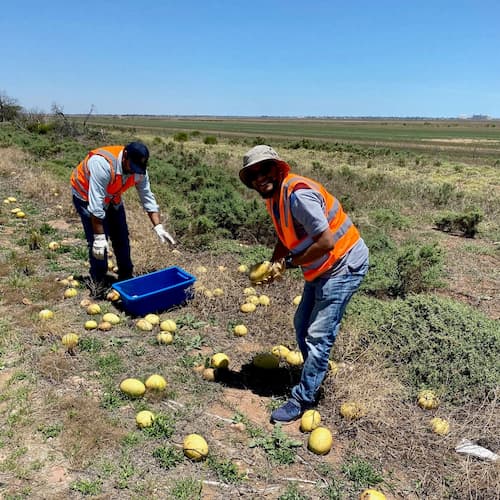Australian Gross Domestic Product (GDP) rose 0.9 per cent in seasonally adjusted chain volume terms in the June quarter 2022 and was up 3.6 per cent through the year, according to figures released by the Australian Bureau of Statistics (ABS) today.
Sean Crick, head of ³Ô¹ÏÍøÕ¾ Accounts at the ABS, said: “Rises in household spending and exports drove growth in the June quarter. This is the third consecutive quarter of economic growth, following a contraction in the September quarter 2021, which was impacted by the Delta outbreak.”
| Levels (RHS) ($b) | Quarterly growth (%) | |
|---|---|---|
| Jun-14 | 443.1 | 0.4 |
| Sep-14 | 445.1 | 0.5 |
| Dec-14 | 446.8 | 0.4 |
| Mar-15 | 451.0 | 0.9 |
| Jun-15 | 451.4 | 0.1 |
| Sep-15 | 456.0 | 1.0 |
| Dec-15 | 458.9 | 0.6 |
| Mar-16 | 462.9 | 0.9 |
| Jun-16 | 465.7 | 0.6 |
| Sep-16 | 466.3 | 0.1 |
| Dec-16 | 471.4 | 1.1 |
| Mar-17 | 472.7 | 0.3 |
| Jun-17 | 475.4 | 0.6 |
| Sep-17 | 480.1 | 1.0 |
| Dec-17 | 482.4 | 0.5 |
| Mar-18 | 487.0 | 0.9 |
| Jun-18 | 490.5 | 0.7 |
| Sep-18 | 492.6 | 0.4 |
| Dec-18 | 493.7 | 0.2 |
| Mar-19 | 496.1 | 0.5 |
| Jun-19 | 498.5 | 0.5 |
| Sep-19 | 502.7 | 0.8 |
| Dec-19 | 505.3 | 0.5 |
| Mar-20 | 504.1 | -0.2 |
| Jun-20 | 468.8 | -7.0 |
| Sep-20 | 485.1 | 3.5 |
| Dec-20 | 501.8 | 3.4 |
| Mar-21 | 511.6 | 1.9 |
| Jun-21 | 514.6 | 0.6 |
| Sep-21 | 505.2 | -1.8 |
| Dec-21 | 524.6 | 3.9 |
| Mar-22 | 528.4 | 0.7 |
| Jun-22 | 533.1 | 0.9 |
Household spending rose 2.2 per cent for the quarter, contributing 1.1 percentage points to GDP. Growth was driven by spending on travel related categories such as transport services (up 37.3 per cent) and hotels, cafes and restaurants (up 8.8 per cent), while spending on food fell 1.2 per cent.
“Households increased spending on domestic and international travel as COVID restrictions further eased and international borders remained open. While spending on transport grew strongly, households were still only spending two thirds of what they did pre-pandemic,” Mr Crick said.
Increased travel activity by both households and business was reflected in increased Gross Value Added for the Accommodation and Food Services, and Transport, Postal and Warehousing industries.
The household saving to income ratio fell for the third consecutive quarter, from 11.1 per cent to 8.7 per cent, as the increase in household spending outpaced growth in household income. “Households were continuing to save but at a declining rate over the past three quarters. While the 8.7 per cent household saving ratio was the lowest since the start of the COVID-19 pandemic, it remains above pre-pandemic levels,” Mr Crick said.
Strength in compensation of employees (up 2.4 per cent) drove a 1.0 per cent increase in household gross disposable income. This is consistent with growth in employment in . The number of employed persons rose 0.9 per cent over the quarter, driven by growth in full-time employment (up 2.3 per cent).
Total dwelling investment fell 2.9 per cent as wet weather across much of the east coast and continued material and labour shortages hampered construction activity. This detracted 0.1 percentage points from GDP.
Net trade contributed 1.0 percentage points to GDP, driven by exports, which rose 5.5 per cent, which was partially offset by imports increasing 0.7 per cent.
“Exports recorded the strongest quarterly rise since the Sydney Olympics boosted travel exports in September quarter 2000,” Mr Crick said. Goods exports rose 4.2 per cent, with the main contributors being mineral ores, other mineral fuels and rural goods. Services exports rose 13.7 per cent, driven by travel and transportation services, as international borders were open for the full quarter.
The terms of trade rose 4.6 per cent with export and import prices up strongly for a second quarter in a row. Ongoing supply chain issues and global uncertainty continued to drive demand for Australia’s mining and rural commodities. High commodity prices coupled with increased export volumes drove a 16.9 per cent increase in Mining operating surplus in June to $83 billion.








